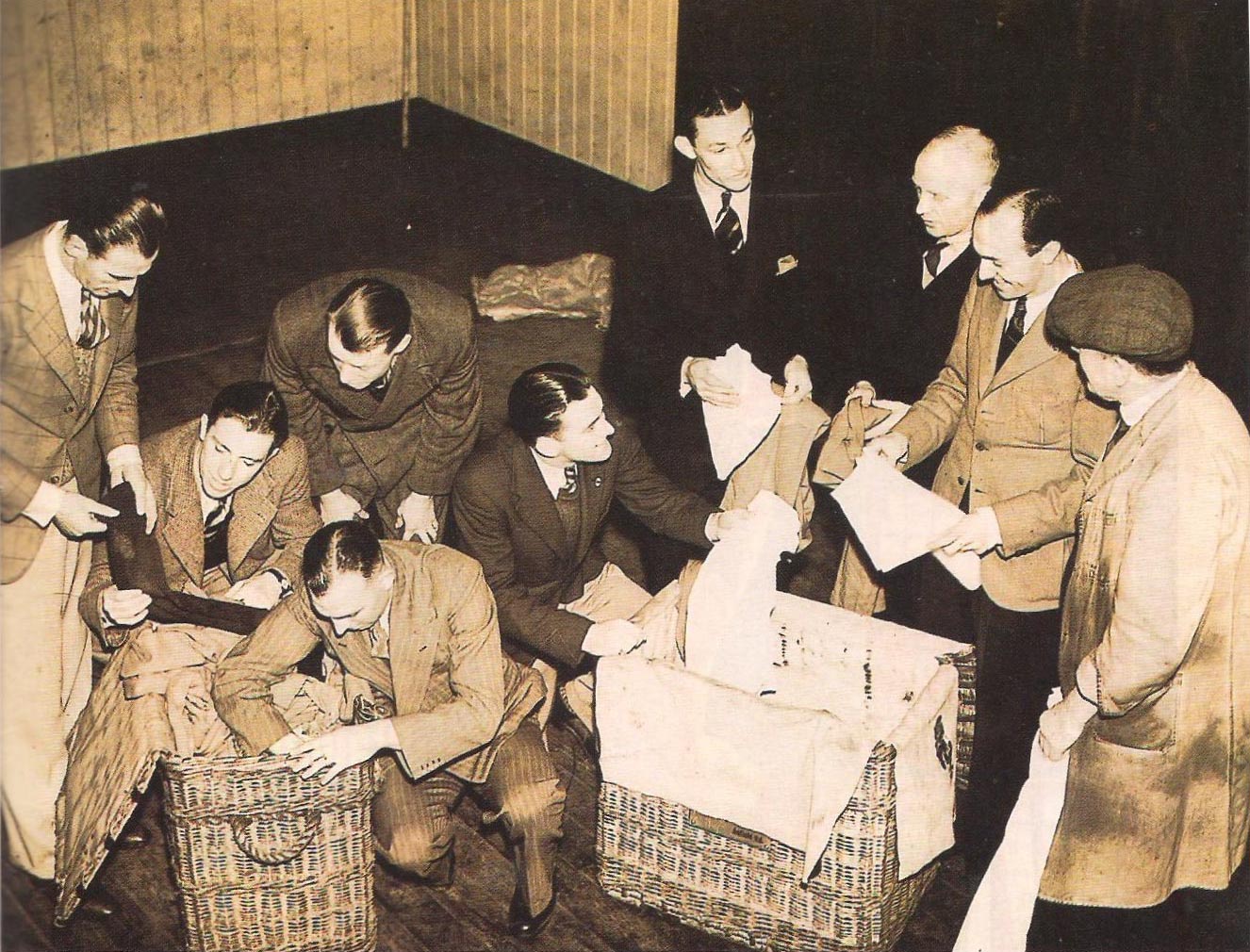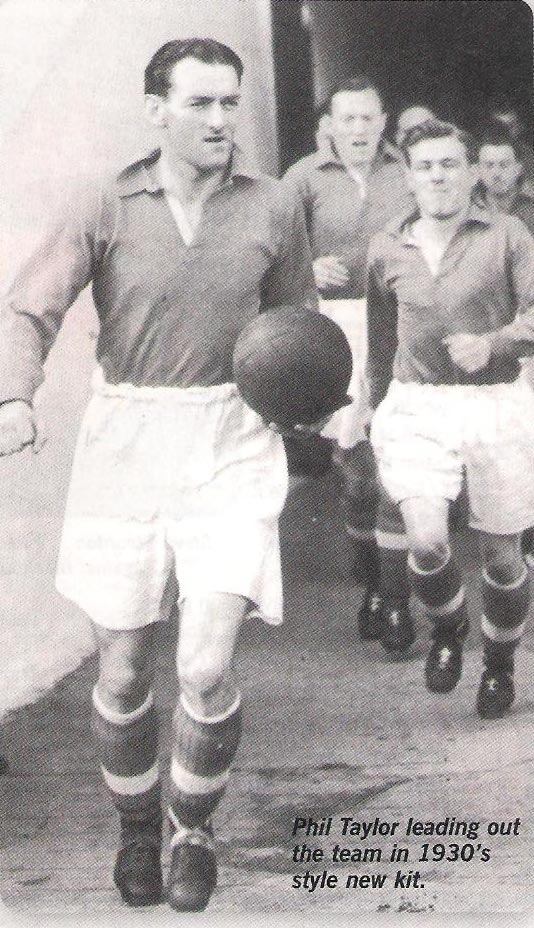 |
 |
 |
 |
 |
 |
| Home | This season | Liverpool F C kits 1892 - 1950 | Liverpool F C kits 1950 - 2000 | Liverpool F C kits 2000 - 2100 | Other | Hillsborough |
| Liverpool F.C. kits 1938 - 1939 | |||||||
| Liverpool
get a new kit in 1938 Museum and Tour Centre STEPHEN DONE (Museum Curator) EXCITEMENT mounts as some of the Liverpool first team assemble at Anfield Road to catch a glimpse of the new 1938 season strip. “Eh Lads! The new kit’s just come in!” shouts Albert Shelley, the club trainer, as he drags the two huge wicker baskets of kit into the middle of the room and throws them open. “Wonder what colour it will be this year?” “Probably Red, same as last year - Oh yes, in fact it is the same kit as last year!” “What about the away strip?" asks Nivvy, the suave South African winger. “White as usual” No surprises there then. Things have changed dramatically in the area of football playing strip since this photograph was taken in the summer of 1938. The shirts were all supplied by Umbro to a standard design that other clubs almost universally adopted. Manchester United for instance, wore identical red shirts and huge white baggy shorts to Liverpool for the greater part of this Century. The shirts were unmarked apart from a small label inside the collar as it was forbidden by the F.A. for kit suppliers to visibly advertise their branding until the mid 1960’s. Liverpool did not even have the club badge upon their shirts until the 1950 FA Cup final, and even then the badge was dropped after the game and was only to make a permanent return in the late 1950’s.
|
 Liverpool Football Club take delivery of the new kit - 1930’s style. A fascinating glimpse into the changing face of the Club is provided by this photograph from the collection of the late Jackie Balmer. From left to right: Arthur Riley (goalkeeper), Tommy Bush, Alf Hanson (in foreground), Jimmy Payne, Phil Taylor(later team manager 1956-59), Berry 'Nivvy' Nieuwenhuys, Tommy Cooper, Jackie Balmer and club trainer Albert Shelley (in the atrociously dirty lab coat)’. The LFC Museum also has another rare survivor from this period, in the shape of a red 1920’s-30’s Umbro shirt - similar to the ones being inspected in this photograph. Now faded to a pale red after many years of washing, it perfectly captures the essence of the game of football from a bygone age. It was quite normal for shirts to be worn for many seasons, and replaced only when worn out. Shirts were not issued to individual players, but given out according to who was picked to play in each position - so one- size-fits-all was definitely the order of the day. The numbers were cut out of fabric - often felt - and sewn onto the reverse, but players names were unheard of until the advent of the Premier League and the introduction of a squad numbering system. The players in the photograph include Tommy Cooper who was considered one of the finest defenders of the inter-war period. Signed from Derby County in December 1934 for a whopping Ј7,500, he proved well worth the investment. He needed to be, as the late 1930’s were curiously barren years despite some fine players, and his solid defending was needed to ensure that the Club held onto at least a midtable position during this frustrating time. Cooper played 160 games and was club captain at the time of the photograph, an honour both Jackie Balmer and Phil Taylor were also to share. He patriotically joined the military police as a dispatch rider during the war, but sadly lost his life in the line of duty in June 1940. © Copyright of site LFC history www.lfchistory.net. This article was printed in Liverpool FC official match day programme. |
